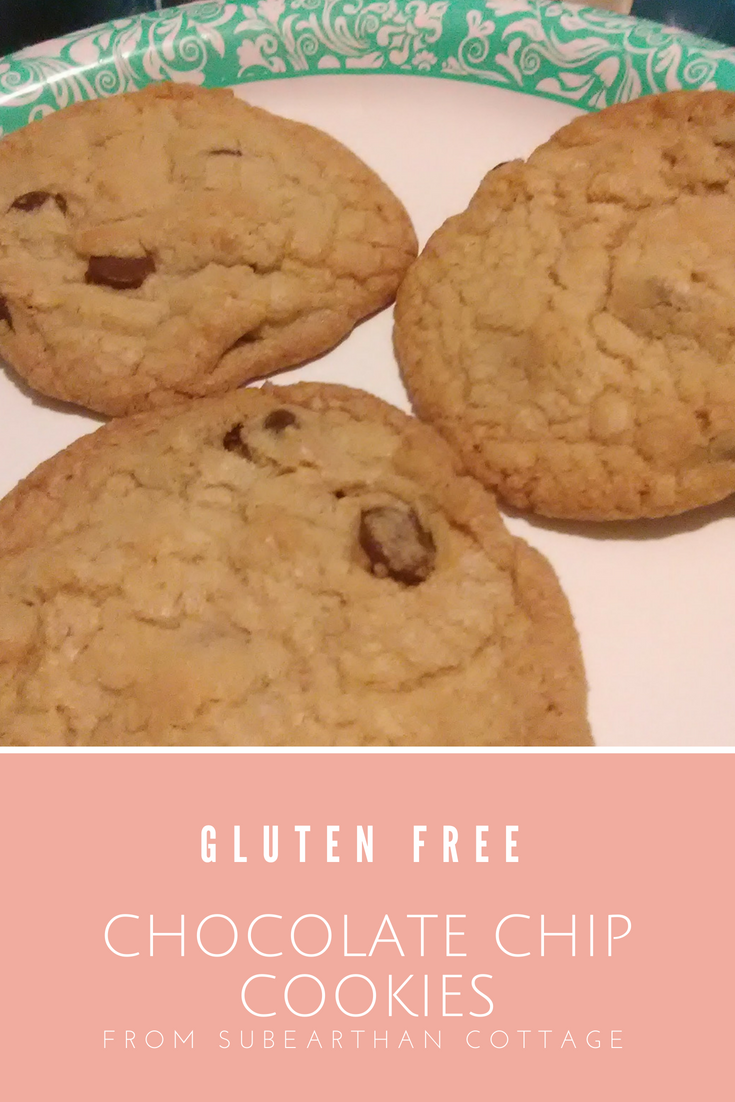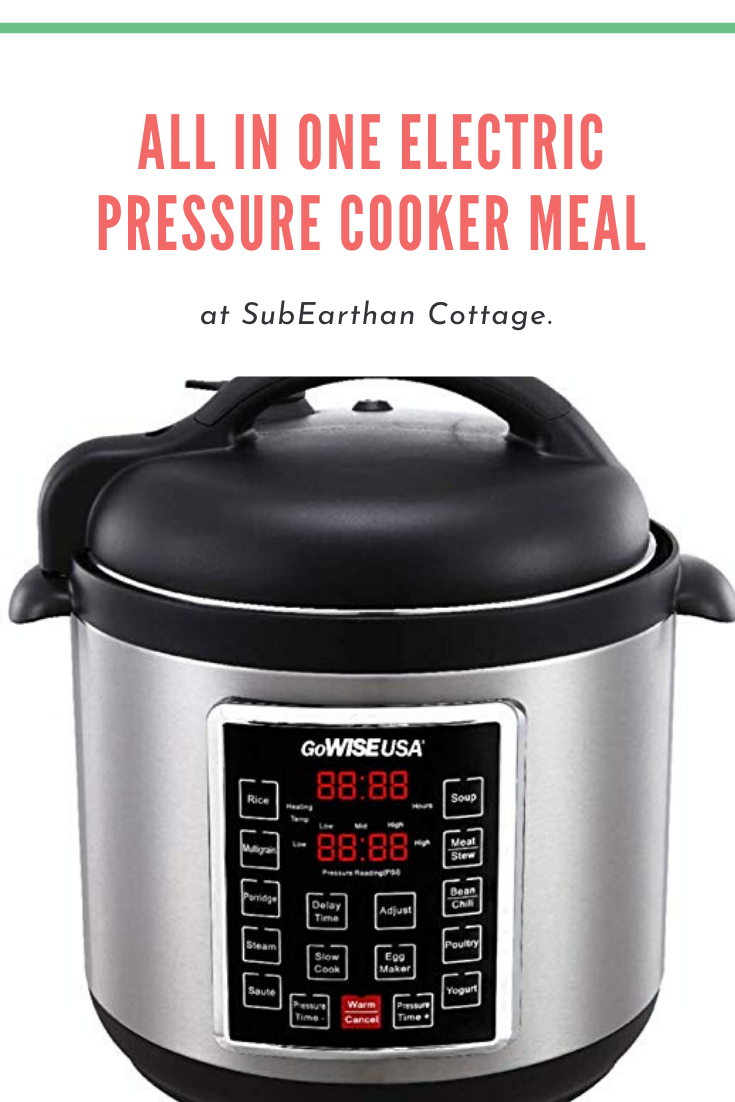
At least from what I’ve tasted, most store bought gluten free chocolate chip cookies are very dry and either too sweet or lacking in flavor. Chocolate chip cookies are practically a staple food, so I hacked my grandma’s cookies recipe. The results are definitely not dry, lacking in flavor or too sweet.
Jump to RecipeThe biggest change I made, of course, is using gluten free flour. My preferred flour is Bob’s Red Mill 1 to 1 gluten free flour. Others will work, but if it’s not one that is blended to be a direct substitute for wheat flour, you will probably want to add about one half teaspoon of xanthan gum.
Even with the 1 to 1 blends, sometimes the cookies spread more than I like. The original recipe calls for one cup and two tablespoons of flour. If I have it on hand, I’ll replace the two tablespoons of flour with a generous one tablespoon of coconut flour. That prevents them from spreading too much. Chilling the dough for a few hours or overnight helps, too, but who has time for that? Besides, the sooner they go in the oven, the less cookie dough I’ll eat.
The original recipe calls for shortening. I would much rather use butter, but one of my boys is lactose intolerant. Straight coconut oil adds to the spreading problem, so I compromise and use half shortening and half coconut oil. The small amount of milk in most chocolate chips isn’t a problem for my son, but using for dairy-free chips would make these completely dairy-free, too! If dairy isn’t a problem, feel free to swap all the fats with butter.
The final change happened after staying up late watching Martha Stewart bake cookies. She mentioned that brown sugar helps make the cookies be moist. The original recipe calls for more white sugar than brown. I tried a few different ratios before settling on using equal amounts of brown and white sugars.
The final result is a yummy, gluten free cookie that isn’t dry and crumbly.

Gluten free chocolate chip cookies
- 1/2 cup shortening
- 1/2 cup coconut oil
- 3/4 cup granulated sugar
- 3/4 cup brown sugar
- 1 teaspoon vanilla
- 2 well beaten eggs
- 2 cups 1 to 1 gluten free flour plus 2 generous tablespoons of coconut flour (or 2 cups plus 4 tablespoons 1 to 1 gluten free flour)
- 1 teaspoon baking soda
- 1 teaspoon salt
- 1 generous cup of chocolate chips
Preheat the oven to 375° F.
Cream together the shortening, coconut oil, sugars and vanilla. I usually use a mixer for everything, but you can do it by hand, too.
Fold in the eggs and mix well.
In another bowl, sift (or just mix really well) the dry ingredients.
Add the dry ingredients a little at a time to the wet ingredients and mix well.
Stir in the chocolate chips. If you are patient, chill the dough for a few hours or overnight.
Otherwise, grease your cookie sheets or line with parchment paper or silicone liners. Greasing is what the original recipe calls for, but I prefer the results from lining the sheets.
Form your cookies (I use a 2 tablespoon sized scoop, but you can make them bigger or smaller) and place them two inches apart on the sheets.
Bake for about 8-10 minutes, keeping a close eye on them during the last few minutes. You want them to be golden and not doughy in the middle.
Cool for a few minutes on the sheets before removing them.
A few notes on the recipe: My recipe is actually double the original. I almost never made a single batch because it’s not really any more effort. If you want, you can save some of the dough in the fridge for a few days.
I also don’t have an accurate cookie count, mainly because cookie dough is delicious. I think I can usually get about 36 cookies with my 2 tablespoon scoop, but that is a a very rough guess.
Gluten and Dairy Free Chocolate Chip Cookies.
Ingredients
- 1/2 cup shortening
- 1/2 cup coconut oil
- 3/4 cup granulated sugar
- 3/4 cup brown sugar
- 1 tsp vanilla
- 2 large eggs
- 2 cups gluten free 1 to 1 flour
- 2 tbsp coconut flour Or 4 more tablespoons gluten free flour
- 1 tsp baking soda
- 1 tsp salt
- 1 cup chocolate chips Make sure these are gluten and dairy free!
Instructions
- Preheat the oven to 375° F.
- Cream together the shortening, coconut oil, sugars and vanilla. I usually use a mixer for everything, but you can do it by hand, too.
- Fold in the eggs and mix well.
- In another bowl, sift (or just mix really well) the dry ingredients.
- Add the dry ingredients a little at a time to the wet ingredients and mix well.
- Stir in the chocolate chips. If you are patient, chill the dough for a few hours or overnight. This helps prevent spreading. I am not patient, lol.
- To bake, grease your cookie sheets or line with parchment paper or silicone liners. Greasing is what the original recipe calls for, but I prefer the results from lining the sheets.
- Form your cookies (I use a 2 tablespoon sized scoop, but you can make them bigger or smaller) and place them two inches apart on the sheets.
- Bake for about 8-10 minutes, keeping a close eye on them during the last few minutes. You want them to be golden and not doughy in the middle.
- Cool for a few minutes on the sheets before removing them.







